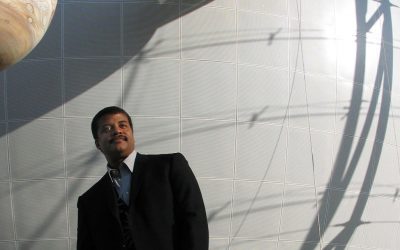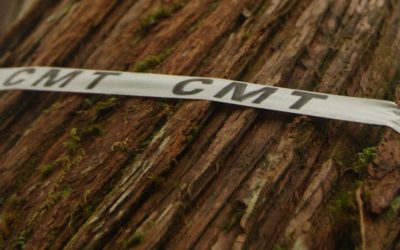Power and Prana: When Yoga Leads to Abuse (SERIES)
This is the second in a two-part series. Click here for Phillipa Beck’s original article, Is Yoga Cultural Appropriation?
By Phillipa Beck
On a steaming hot afternoon in the Berkshires in 2012, I’ve sought shade in the meditation garden at Kripalu, a health and yoga centre two and a half hours from Boston. Step by step, I follow the circular walking meditation path. Slate tiles underfoot, tree branches domed overhead, I sink deeper into the flow of breath, body and mind. Suddenly two hours have passed. My entire being is radiant, filled with joy.
The power of this immersive and deeply connective experience has stayed with me in the years since; it informs my yoga practice today, and my life. But it can be hard to rectify yoga’s spiritual power with the unhealthy guru relationships that can result when that power is abused. In recent years, we’ve seen yoga empires crumble as sexual assault accusations threaten to undermine the credibility of this do-no-harm practice. The community is responding with a trend toward targeted programs that remove any hint of guru teaching, chanting, or Sanskrit and focus on mindfulness techniques and funding through public health agencies.
Raising kundalini
Amrit Desai was the spiritual head of Kripalu from the 1970s until his abrupt departure in 1994. The charismatic, kundalini-raising guru was a master at creating a powerful, direct experience of prana, or life-force energy. In his book Self-Awakening Yoga, Don Stapleton remembers the instant he saw Amrit Desai walk into a meeting hall: “Even though an ocean of people surrounded me, I felt the yogi looking directly at me. I knew that my life would be about yoga from that moment on.”
During Desai’s tenure, the yogi preached a strict code of behaviour for his unmarried disciples. In 1989, he told Hinduism Today that celibacy holds much of Kripalu’s power. Men and women lived separately, but also ate in different halls and travel in separate cars. There is good harmony, he added: “My life is such. No conflicts.”
Fallen gurus
However, in 1994, revelations surfaced of ongoing sexual relationships between the then-married Desai and a number of female ashram residents. These, and other abuses of power, were confirmed. Desai confessed to three affairs, agreed to a $2.5 million settlement and was ousted.
Twenty-five years later, the Kripalu organization has managed to rebuild its shattered trust with the yoga community, successfully rebranding itself as the first yoga centre in North America to transition from a traditional guru-disciple structure to a secular, all-inclusive centre for yoga, health, wellness and lifestyle change.
I flew there in 2012 to regroup and get a new perspective on yoga.
At the time, I was halfway through an intense—and pricey—training to certify in Anusara yoga. I’d learned the system’s charismatic founder, John Friend, was facing accusations of financial improprieties, tax evasion and a sex scandal.
Friend, a former financial analyst from Texas, had risen to rock-star yoga fame with a gospel of tantric principles and detailed alignment in yoga poses. He was supremely articulate about his philosophy of “intrinsic goodness” and “aligning with grace.” There was a rigorous, years-long training required for certification.
Before I left for Kripalu, the New York Times featured a profile on Friend and declared Anusara to be “one of the world’s fastest-growing styles of yoga.” But then came the news: he’d been leading naked, occult rituals on bearskin rugs with some of his married, female students. And he’d cancelled his employees’ pension fund.
There was a massive breakdown of trust within the organization followed by an exodus of teachers. Within months, the Anusara community, and my chances to complete my certification, had collapsed.
Tantric roots
The very roots of Hatha yoga are about raising a person’s vital life force and awakening the power of kundalini—energy believed to lie dormant at the base of the spine. The Hatha Yoga Pradipika, a tantric text from the 15th century, lays out the steps. There are cleansing (kriya) and breathing (pranayama) techniques, some yoga poses (asana) and meditation, which all serve to stoke a practitioner’s internal fire (agni) and release kundalini.
“Imagine a resting snake, coiled eight times, waiting to unleash its magnificent power at the base of a great mountain. She has within her infinite energy potentiating. She is the force of creation, resting, longing to rise up to be in union with consciousness at the heights of spiritual bliss,” writes Laura Hocheiser on Gaia.com.
World-renowned yoga and meditation teacher Rod Stryker describes this unconditional bliss and oneness that a kundalini awakening produces as sheer joy, being “at one with all things, feeling no separateness or duality from anything in creation.”
#MeToo hits the yoga world
Raising life-force energy is one thing: Learning what to do with it is trickier. According to the New York Times, yoga and eroticism share a long history, something modern-day yogis have until recently swept under the carpet.
In November 2017, Aruba-based yoga teacher Rachel Brathen invited her 2.1 million Instagram followers to share their stories of sexual harassment in yoga. Her @yoga_girl page was inundated with responses. According to How #MeToo Shook the Yoga World: Inside one Instagrammer’s Crusade to Bring Harassment to Light, Brathen received more than 400 personal testimonies.
The stories she collected vary in many ways—from being adjusted in class inappropriately, to being propositioned for sex, to being aggressively or violently assaulted—but they often share one thing in common: the victims were shocked to be violated in what they thought was a protected space, by members of the yoga community that they respected.
They often share one thing in common: the victims were shocked to be violated in what they thought was a protected space, by members of the yoga community that they respected.”
“In something that’s so sacred and so beautiful as the yoga practice, it just breaks my heart,” Brathen writes.
The Harvey Weinstein of yoga has got to be Bikram Choudhury, the Beverly Hills founder of hot yoga. At the height of his influence, the millionaire entrepreneur boasted a fleet of Rolls-Royces along with his global empire of yoga studios. His stamp of approval could make or break careers. In 2016, Bikram was charged with sexual assault and rape by six former students and found guilty of sexual harassment. A judge issued a warrant for Bikram’s arrest. He fled to India owing over $7 million in damages.
These sorts of scandals aren’t new to the yoga world. Decades earlier, Swami Akhandananda, spiritual head of Mangrove Ashram in Australia, was charged with 35 counts of sexual abuse in 1987, convicted and sent to prison. He died of alcoholism in the late 1990s.
Even Paramahansa Yogananda, founding father of yoga in the West, makes the list. Yogananda introduced countless people to yoga with his 1946 book Autobiography of a Yogi. He was one of the first Indian yogis to move to the USA, spending much of the 1920s and 1930s lecturing and touring. Allegations are that he fathered several “love children” and that he ran a harem while on tour.
And now the legacy of Pattabhi Jois, founder of the hugely popular Ashtanga tradition, is cracking. A steady stream of incriminating photos, videos and stories on social media document 30 years of power and abuse. The yoga guru, who died in 2009 at age 93, is accused of engaging in repeated acts of sexual misconduct and sexual assault, “enabled for decades by a devotional culture that saw him first and foremost as a benevolent father figure,” Matthew Remski says in his article Yoga’s Cultural of Sexual Abuse: Nine Women Tell Their Stories.
Change in the yoga industry
On Dec. 31, 2017 the Yoga Alliance, a governing body for yoga teachers and schools, updated its code of conduct and posted a Statement on Sexual Misconduct in Our Community fairly prominently on its website.
“Given the well-publicized history of yoga readily visible via internet search, it should come as no surprise that, just as in other communities, there is a pattern of troubling sexual misconduct within some parts of the yoga community,” the statement begins. “It is important that we openly acknowledge this reality.”
Yoga Alliance brought in consultants from RAINN (US-based Rape, Abuse & Incest National Network) to help produce a new ethical code of conduct along with guidelines for a yoga teacher’s appropriate scope of practice.
Another change in the yoga industry is the proliferation of body-positive yoga teachings and trauma-informed yoga trainings that have started to take place across Canada, the US and Europe in the last two years. There is Yoga for First Responders, Yoga for Survivors, Yoga for Caregivers, Yoga for Pain Relief, Restorative Yoga and Yoga for Cancer Patients, to name but a few.
The Yoga Alliance is an international organization which, last year, had nearly 92,000 registered yoga teachers and 6,355 yoga schools. But it issues guidelines and registration is voluntary—yoga teachers in North America and Europe are not required to be licensed and are not monitored in the same manner as doctors, physio therapists or counsellors.
Will the traditional guru-disciple relationship continue to crumble as we head toward secular, all-inclusive practices of health and wellness? And will programs like Yoga in the Workplace or the push for licensing regulations provide the powerful, transcendent experience that drew many of us to yoga in the first place?
I’m curious to see the fallout from #MeToo in the yoga world.
Phillipa Beck owns Full Circle Yoga and a B&B in northern BC. She teaches yoga class, runs silent backcountry retreats, and hosts the Sip & Stretch Series: Wine Tasting, Beer Tasting, and Tea Tasting with Yoga.



